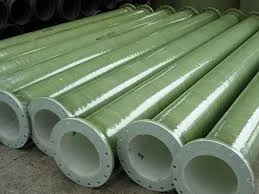
-
 Afrikaans
Afrikaans -
 Albanian
Albanian -
 Amharic
Amharic -
 Arabic
Arabic -
 Armenian
Armenian -
 Azerbaijani
Azerbaijani -
 Basque
Basque -
 Belarusian
Belarusian -
 Bengali
Bengali -
 Bosnian
Bosnian -
 Bulgarian
Bulgarian -
 Catalan
Catalan -
 Cebuano
Cebuano -
 China
China -
 China (Taiwan)
China (Taiwan) -
 Corsican
Corsican -
 Croatian
Croatian -
 Czech
Czech -
 Danish
Danish -
 Dutch
Dutch -
 English
English -
 Esperanto
Esperanto -
 Estonian
Estonian -
 Finnish
Finnish -
 French
French -
 Frisian
Frisian -
 Galician
Galician -
 Georgian
Georgian -
 German
German -
 Greek
Greek -
 Gujarati
Gujarati -
 Haitian Creole
Haitian Creole -
 hausa
hausa -
 hawaiian
hawaiian -
 Hebrew
Hebrew -
 Hindi
Hindi -
 Miao
Miao -
 Hungarian
Hungarian -
 Icelandic
Icelandic -
 igbo
igbo -
 Indonesian
Indonesian -
 irish
irish -
 Italian
Italian -
 Japanese
Japanese -
 Javanese
Javanese -
 Kannada
Kannada -
 kazakh
kazakh -
 Khmer
Khmer -
 Rwandese
Rwandese -
 Korean
Korean -
 Kurdish
Kurdish -
 Kyrgyz
Kyrgyz -
 Lao
Lao -
 Latin
Latin -
 Latvian
Latvian -
 Lithuanian
Lithuanian -
 Luxembourgish
Luxembourgish -
 Macedonian
Macedonian -
 Malgashi
Malgashi -
 Malay
Malay -
 Malayalam
Malayalam -
 Maltese
Maltese -
 Maori
Maori -
 Marathi
Marathi -
 Mongolian
Mongolian -
 Myanmar
Myanmar -
 Nepali
Nepali -
 Norwegian
Norwegian -
 Norwegian
Norwegian -
 Occitan
Occitan -
 Pashto
Pashto -
 Persian
Persian -
 Polish
Polish -
 Portuguese
Portuguese -
 Punjabi
Punjabi -
 Romanian
Romanian -
 Russian
Russian -
 Samoan
Samoan -
 Scottish Gaelic
Scottish Gaelic -
 Serbian
Serbian -
 Sesotho
Sesotho -
 Shona
Shona -
 Sindhi
Sindhi -
 Sinhala
Sinhala -
 Slovak
Slovak -
 Slovenian
Slovenian -
 Somali
Somali -
 Spanish
Spanish -
 Sundanese
Sundanese -
 Swahili
Swahili -
 Swedish
Swedish -
 Tagalog
Tagalog -
 Tajik
Tajik -
 Tamil
Tamil -
 Tatar
Tatar -
 Telugu
Telugu -
 Thai
Thai -
 Turkish
Turkish -
 Turkmen
Turkmen -
 Ukrainian
Ukrainian -
 Urdu
Urdu -
 Uighur
Uighur -
 Uzbek
Uzbek -
 Vietnamese
Vietnamese -
 Welsh
Welsh -
 Bantu
Bantu -
 Yiddish
Yiddish -
 Yoruba
Yoruba -
 Zulu
Zulu
inserting rock bits techniques and strategies for efficient
Inserting Rock Bits Techniques and Strategies for Efficiency
In the world of drilling, the efficiency and effectiveness of rock bits play a crucial role in determining productivity and cost-effectiveness. Rock bits are the cutting tools used in drilling operations to penetrate geological formations. The methods used to insert these bits can significantly influence overall drilling performance. In this article, we will discuss various techniques and strategies to enhance the efficiency of inserting rock bits.
Understanding Rock Bits
Rock bits come in various types, primarily classified into three categories roller cone bits, fixed cutter bits, and diamond bits. Each type has distinct features suitable for different formations and drilling conditions. The selection of the appropriate rock bit is the first step in efficient drilling. Factors such as the hardness of the rock, the rate of penetration, and the expected life of the bit must be considered.
Techniques for Efficient Insertion
1. Pre-Drill Planning Before commencing drilling, comprehensive geological surveys should be conducted. Understanding the subsurface conditions can help in selecting the optimal rock bit and insertion method. Advanced modeling techniques that predict the rock formation's type and hardness can lead to better decision-making.
2. Optimal Bit Selection Choosing the right bit can dramatically affect drilling efficiency. For instance, roller cone bits are ideal for softer formations, while diamond bits excel in hard rock. Ensuring the proper fit of the bit to the drill string is also critical. A well-matched bit can prevent misalignment, reducing the risk of damage and enhancing the speed of penetration.
3. Drill String Configuration The configuration of the drill string, which includes the drill pipe and the bit, is essential for effective performance. A properly designed drill string should minimize friction and maximize weight transfer to the bit. This can be achieved by choosing the right materials and maintaining appropriate lengths and diameters.
4. Monitoring and Adjustments During drilling, real-time monitoring is vital. Sensors and data analytics can provide immediate feedback on the bit’s performance, allowing operators to make necessary adjustments. For example, if the rate of penetration decreases, increasing the weight on the bit or adjusting the rotary speed can restore efficiency.
inserting rock bits techniques and strategies for efficient

5. Maintaining Bit Integrity Regular maintenance is crucial for maximizing a bit's lifespan. Routine inspections to check for wear and tear can help identify issues before they escalate. Additionally, using lubricants and cooling fluids during drilling can reduce friction and prolong the bit’s functional life.
Strategies for Enhancing Efficiency
1. Training and Skill Development Equipping the workforce with the necessary skills and knowledge about rock bits and drilling techniques is vital. Regular training sessions focused on the latest technologies and best practices can lead to improved performance and safety.
2. Implementing Technology Embracing innovative drilling technologies can significantly enhance efficiency. Automated drilling systems and advanced bit designs that adapt to changing rock conditions can optimize performance, reducing drilling times and costs.
3. Data Management and Analysis Collecting and analyzing drilling data helps in understanding trends and patterns, allowing for informed decision-making. Implementing systems for data integration can provide insights that lead to improved strategies for bit insertion and overall operations.
4. Sustainability Practices Finally, incorporating sustainable practices in drilling operations not only boosts efficiency but also minimizes environmental impacts. Using eco-friendly drilling fluids and recycling materials can contribute to more responsible drilling activities.
Conclusion
Inserting rock bits efficiently requires a multi-faceted approach that encompasses careful planning, optimal selection, and continuous monitoring. By adopting effective techniques and strategies, drilling operations can achieve higher productivity while maintaining cost-effectiveness. As technology continues to evolve, staying updated with the latest advancements will be crucial for enhancing drilling efficiency and ensuring successful outcomes in the field.









